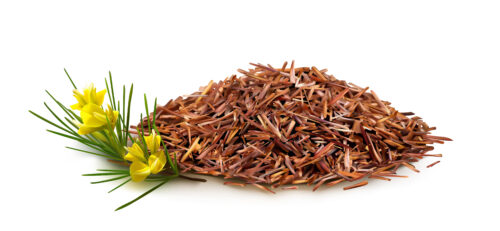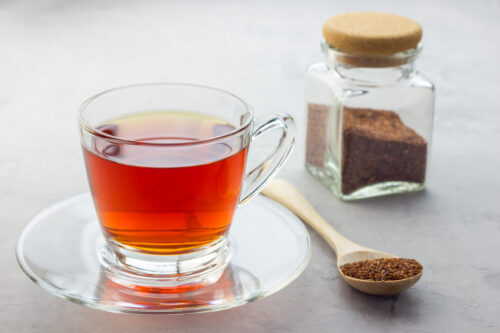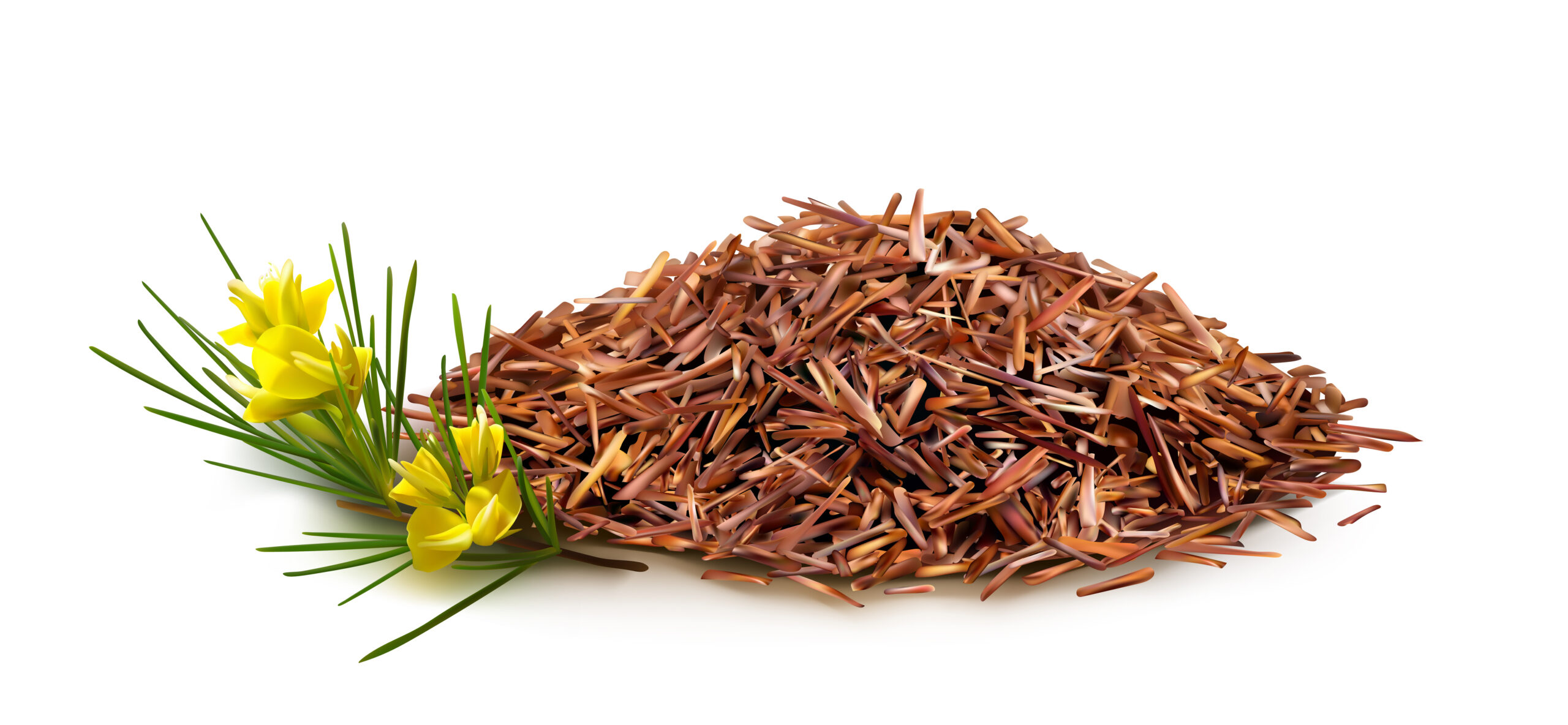Like many other herbalists, I like to drink herbal tea with or after my meals. However, it’s not always easy to find. Generally most restaurants offer chamomile and/or mint teas, but few other choices. So you can imagine how happy I was to discover that in South Africa I found rooibos tea everywhere plus available at any time or the day or night. Since rooibos is native to the Fynbos eco-region of South Africa, it is like the national tea of South Africa.
Aspalathus linearis, the botanical name of rooibos tea, is a shrub found in the western mountainous parts of the Western Cape north of Cape Town. Rooibos means “red bush” in Afrikaans and is also known as red tea and African red tea. The type of A. linearis that is cultivated commercially for tea is the red type, also known as the Rocklands type.
There are really two types of rooibos; red and green. The long needle leaves of the plant when harvested in summer (January – March) are green while after they are fermented they turn red. The green tea is actually tan/yellow in color that mildly tastes like green tea. While the red is sweet and fruity – it can be drying if taken in excess because of its astringency. Both have a neutral energy. Low in tannins, it is a great green or black tea substitute.

Rooibos is touted as a medicinal herb for many conditions – skin problems, allergies, diabetes, bone health, pain, weight loss, stomach ailments, and heart health – and yet few studies have confirmed these claims.
As to benefits for the skin, however, I recently learned about this from a friend, an effect I hadn’t been aware of before. This friend liked rooibos so much, she drank it daily for a month. During that time, she began to get compliments on how great her skin looked. Normally quite white, her skin tone evened out and was brighter. For some reason she stopped drinking the tea and noticed her skin turn a bit pasty-white again. When she resumed rooibos, again her skin tone improved.
Indeed, rooibos contains antioxidants, enzymes, and chemical compounds that reduce inflammation and help the skin look youthful. One of these is alpha hydroxy acid, usually contained in skin treatments and chemical peels, that helps reduce fine lines and wrinkles. It also has a soothing effect that reduces redness and irritation. As well, the zinc content of rooibos can help relieve eczema and acne. And, of course, being high in antioxidants, particularly polyphenols, rooibos helps fight free radicals that accelerate the aging process.
Rooibos also contains calcium, iron, magnesium, zinc, and high levels of vitamin C. Supposedly the anti-inflammatory properties of rooibos make it useful for arthritic pain while its bioactive flavonoid, chrysoeriol, works as a bronchodilator to help relieve wheezing and coughing caused by allergic rhinitis and asthma. It also contains the bioflavonoid, quercetin, which can prevent allergies from being triggered. Indeed, I have several patients who have experienced tremendous allergy relief from just taking quercetin. Further, its vitamin C content apparantly helps repair collagen and connective tissue in the joints. You will have to try it for yourself to see if you realize any of these benefits.
Studies have been conducted on the antioxidant, aspalathin, in rooibos to suggest it may have anti-diabetic effects, helping balance blood sugar, improving insulin resistance, and increasing glucose tolerance. However, human studies have yet to be conducted to confirm this.

To make rooibos tea, steep the leaves (1 tablespoon/cup water) or teabag for 10 minutes before drinking. Milk is often added as well.


Good Morning
I am one of your new students and from South Africa, Western Cape.
I drink Rooibos Tea every day and yes, it is really amazing. I
Christelle